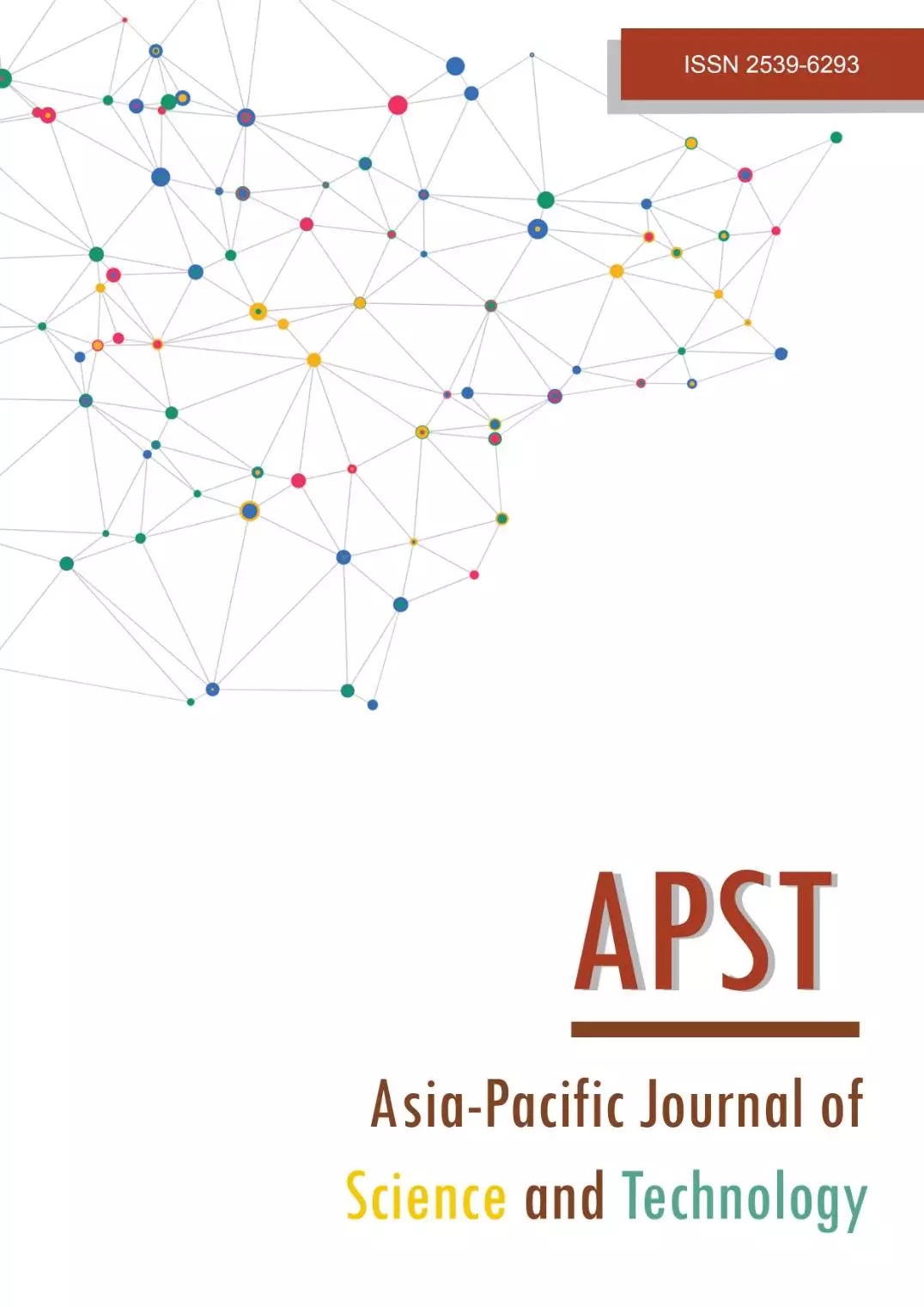A study of cassava physical behavior for a design of cassava combine harvester
Main Article Content
Abstract
The research objective was to study physical behaviors of cassava parameters for a design of cassava combine harvester. The cassava used in this study was of variety Kasetsart 50. The study of the cassava stem shape found the highest percentage number of cassava stems to belong to the shape groups T2, T1 and T3 with the average of 76.0%. For the groups T2, T1 and T3, the stem decisive behavior of cassava was an upright stem with a few branches that fit the gripping unit of the cassava combine harvester. The study of tilt angle behavior of cassava stem tilting at angle with its rhizome horizontal plane, revealed the highest amount of cassavas to belong to the angle in the range 60º-90º, followed by the 30º-59º angle range, with averages of 75.9% and 18.1% respectively. The angle ranges of 60º-90º and 30º-59º were considered as good condition for an upright stem being easily pulled off the soil and therefore suitable for the design. Further study of tilt angle behavior of cassava tuber tilting at angle with its rhizome horizontal plane, revealed the highest amount of cassavas tested to belong to the angle range of 60º-90º, followed by that of 30º-59º, with averages of 74.6% and 13.9% respectively. Consequently, the cutting blade had to be designed as a cylindrical shape, considered to be more suitable for the tilt angle behavior within ranges of 60º-90º and 30º-59º.
Article Details
References
Food and Agriculture Organization of the United Nations [Internet]. Rome: The Organization; c2020 [cited 2019 Oct 20]. Crops statistics. Available from: http://www.fao.org/faostat/en /#search/Crops% 20statistics.
Office of Agricultural Economics. Cassava export statistics online [Internet].2019 [cited 2019 October 20]. Available from.URL:http://www.oae.go.th/oae_report/export_import/export_result.php.
Junsiri C, Panpoom A. The study of cassava root conveying equipment attached to a truck. Adv Mat Res. 2014;931(932):1555-1560.
Bunart S. Design and development of a tractor-mounted cassava root collector. [thesis]. Bangkok: Kasetsart University; 2002.
Chiawchanwattana C. The Study and development of a cassava transporter after harvesting. [thesis]. Khon Kaen: Khon Kaen University; 2006.
Chamsing A, Senanarong A, Sngiamphongse S, Sutthiwaree P, Ksaehancharpong Y, Wannarong K, et al. Research and development of moldboard plow type cassava digger. TSAEJ. 2009;15(1):13-18.
Suvanapa K, Wongpichet S. A study in the use of engineering technical feasibility a square shape blade of cutting Cassava tuber from rhizome. In: Terdwongworakul A, editor. The 8th TSAE International Conference: TSAE 2015 and the 16th TSAE National Conference; 2015 March 17-19; Thailand; 2015. p. 335-342.
Khonphutsa J, Kitsamphanwong, A. A Study of cutting rhizomes from cassava root by using circular saw. [thesis]. Khon Kaen: Khon Kaen University; 2012.
Langkapin J, Kalsirisilp R, Tantrabandit M. Design and fabrication of a cassava root picking machine. Thai Agric Res J. 2012;30(3):300-311.
Junyusen P, Vatakit K, Somphong C, Arjharn W. Development of a cassava harvester for cutting cassava tuber from rhizome. Agric Sci J. 2014;45(3)Suppl:353-356.
Arsawang S, Chansrakoo W, Chamsing A, Sangphanta P, Chawkongchak S. Design and development of cassava root plucking out machine. Agric Sci J. 2016;47(3)Suppl:463-466.
Junsiri C, Chinsuwan W. Operating parameters affecting header losses of combine harvester for Khaw Dok mail 105 rice variety. KKU Res J. 2008;13(5):613-620.
Jengsooksawat S, Pimjaisai P, Padang P, Thangdee D. Some physical properties of cassava for design harvesting machinery. J Sci Technol MSU. 2012;31(5):646-649.


